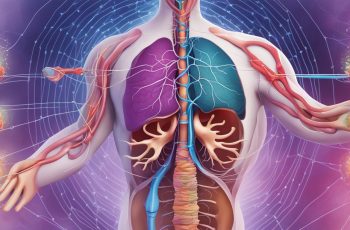Although somewhat common, the growth of mold in your house should be taken very seriously as it can have serious detrimental effects on your health.
This article will help you understand the symptoms of mold sickness, possible side effects, and ways to treat the issue safely and effectively.
Conventional medicine does not consider mold to be a problem, and therefore offers no treatment. Symptoms of mold sickness are similar to other ailments, and are thus often attributed to being caused by other health issues.
That said, these are the most common mold sickness symptoms:
- Headaches
- Fatigue, post-exercise malaise, and weakness
- Memory problems, focusing issues, executive function problems, brain fog
- Light sensitivity, blurred vision, red eyes
- Sinusitis, air hunger, cough, shortness of breath, asthma-like signs
- Static “shocks”
- Tremors
- Weight gain despite sufficient effort (weight loss resistance)
- Vertigo
- Muscle cramps, constant nerve pain, joint pain, aches not caused by inflammatory arthritis
- Metallic taste
- Memory problems, focusing issues, executive function problems, brain fog
- Abdominal pain, diarrhea, appetite changes, nausea
- Night sweats or temperature regulation issues
- Excessive thirst
- Increased urination
- Persistent nerve pain
Given the common nature of many of the above ailments, it is easy to see why they are often confused with being symptoms of other unrelated diseases.
Health effects stemming from exposure to mold have been scientifically studied for more than three decades. Researchers have found that it is composed of numerous types of fungi that grow in filaments and reproduce by creating tiny spores (invisible to the naked eye) that sprout and fly away.
Environment
Mold thrives in warm, damp, and humid places with poor ventilation (such as basements, sheds, showers etc), and in states with climates mirroring that of Nevada and Arizona.
Mold often appears in bathrooms, on showerheads, in poorly ventilated rooms, and sometimes even attached to furniture, books, pets, shoes, carpets, and papers. Mold can also circulate in the air system, so it is advisable to change your HVAC filters on every three months.
Water-damaged buildings support the formation of a complex combination of contaminants present in the air and dust, which form a toxic chemical mixture and create harmful ingredients known as mycotoxins, that remain on spores and fragments of mold released into the air.
It is important to note that in most cases, mold sickness is most commonly the result of exposure to water-damaged areas or buildings. Unfortunately, half of the buildings we live in are water-damaged, causing mold and mold illnesses to the ones which are more prone to it.
Mold Toxicity
Mold toxicity is classified in the large category of biotoxin illnesses and is otherwise known as Chronic Inflammatory Response Syndrome (CIRS).
Chronic Inflammatory Response Syndrome (CIRS) is “an acute and chronic, systemic inflammatory response acquired following exposure to the interior environment of a water-damaged building with resident toxigenic organisms, including, but not limited to fungi, bacteria, actinomycetes, and mycobacterium as well as inflammagens . . . . “ says Ritchie Shoemaker, MD, a well-renowned author on the theme, including Surviving Mold: Life in the Era of Dangerous Buildings.
Dr. Shoemaker states that: “24% of people cannot make adequate antibody responses, and they’re the ones that comprise over 95% of people who have an illness from water-damaged buildings.”
DNA’s impact on the susceptibility to mold illness
Dr. Shoemaker says that 24% of the population is genetically susceptible to mold toxicity as they have an immune response gene (HLA-DR) — thus making them vulnerable to mold illness. This subgroup includes 95% of the cases of mold illness.
2% of people are especially prone to it and have a “sicker quicker” variation of these genes.
Mold illness from water-damaged buildings is causes chronic inflammation due to a weakened immune system, and does not heal on its own, thus leading to various illnesses if left untreated.
The diagnosis of CIRS is established if the patient meets all the criteria above:
- Abnormalities documented by Visual Contrast Sensitivity (VCS) tests.
- History, symptoms, and signs of biotoxin exposure. The history should involve exposure to toxin producing molds as documented by the EPA-approved ERMI testing. Also, in the case of microcystin, ciguatera, etc., the history involves likely exposure or laboratory evidence of exposure.
- A genetic predisposition to biotoxin-related illness, on the basis of an identification of an HLA susceptible haplotype.
- Biomarkers consistent with the vascular, neuroimmune, and endocrine abnormalities specific to CIRS. In the case of consistent biotoxin exposure, an abnormal VCS test, or a susceptible genotype, you will probably show the laboratory abnormalities seen in CIRS.
If you suspect that you’ve been exposed to mold and are experiencing symptoms, you should do the following:
- Research mold illness.
- Inspect your space (home, office, etc) for mold using an ERMI test (approx. $325). If results are positive, call an environmental professional immediately to properly solve the problem.
If you found this article helpful, please share with your friends and family by clicking the button below!
Source: justnaturallyhealthy.com




